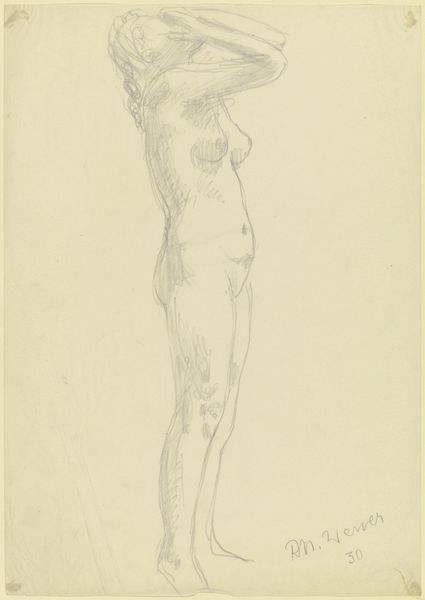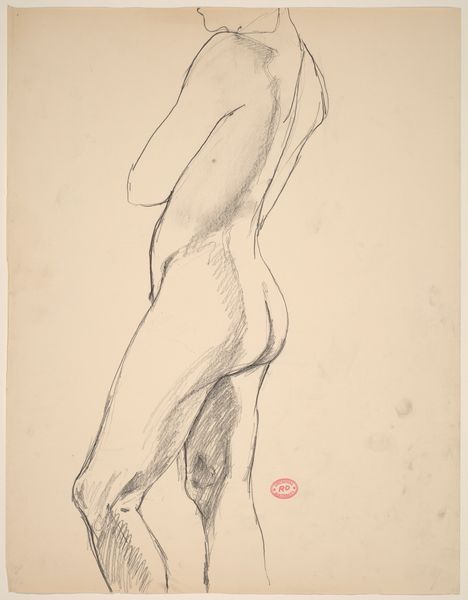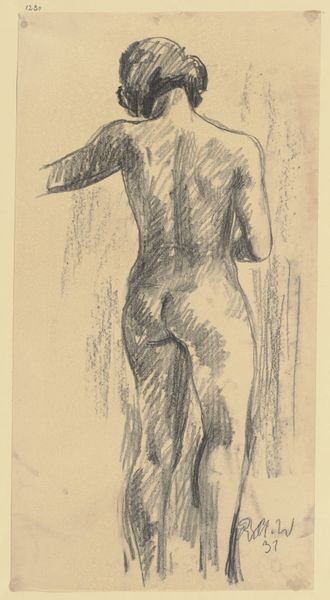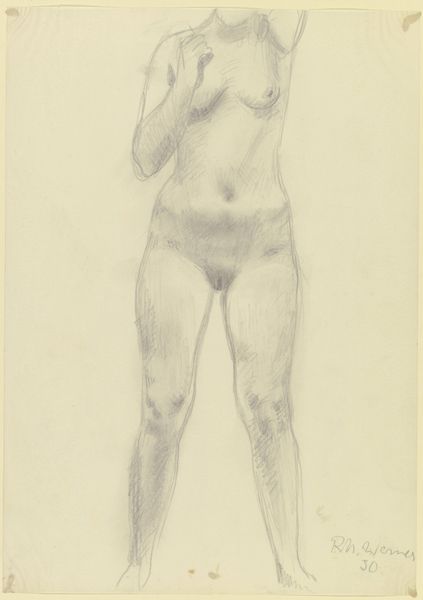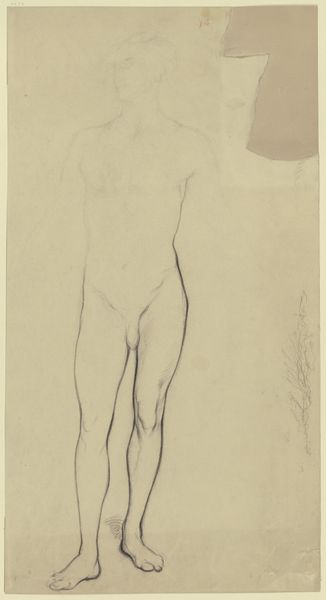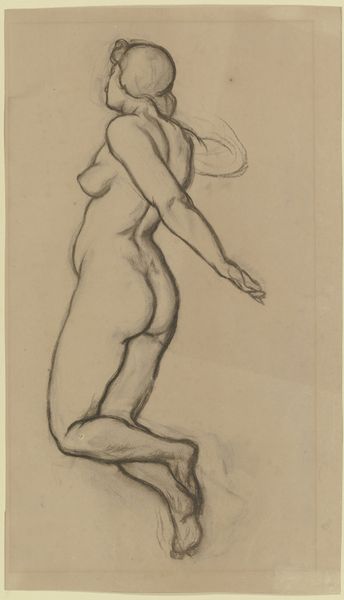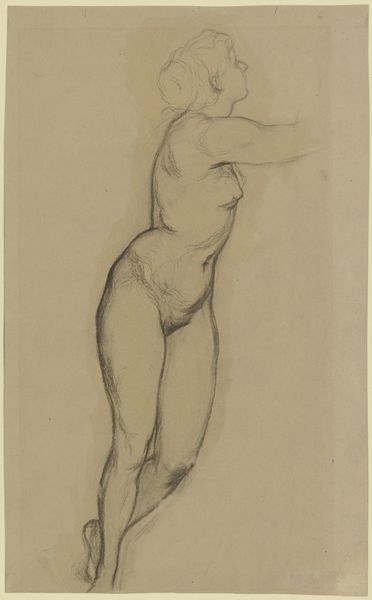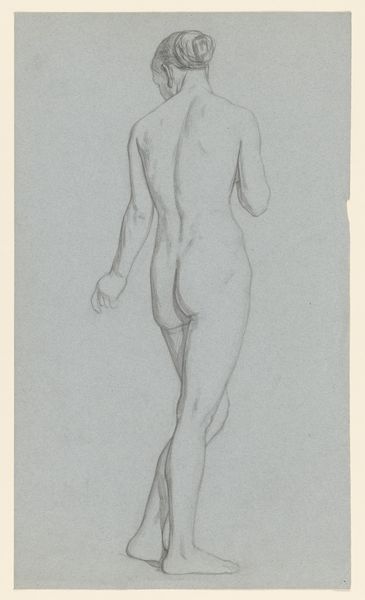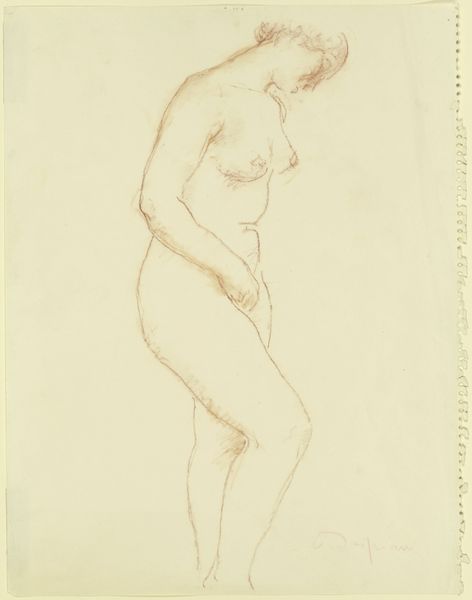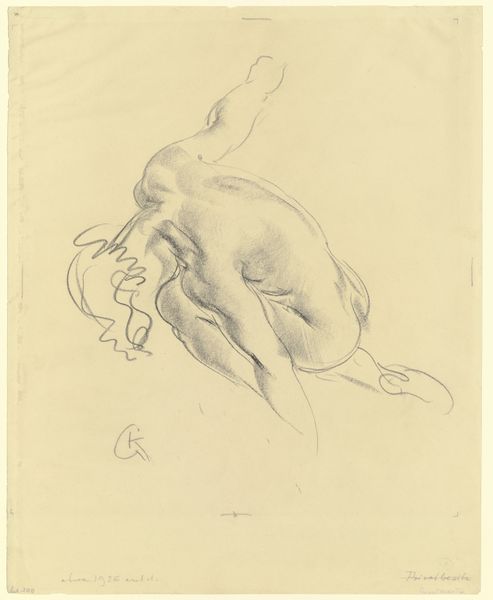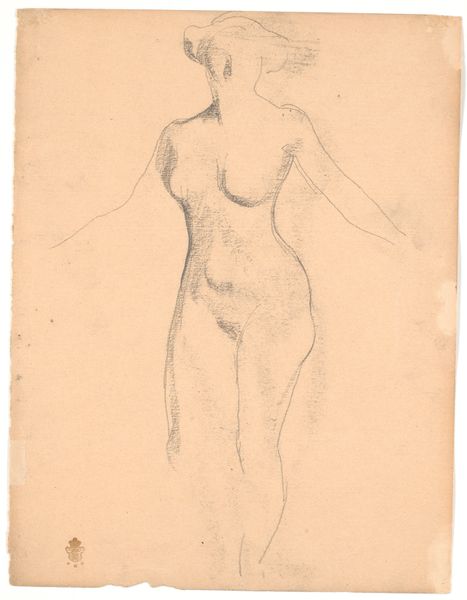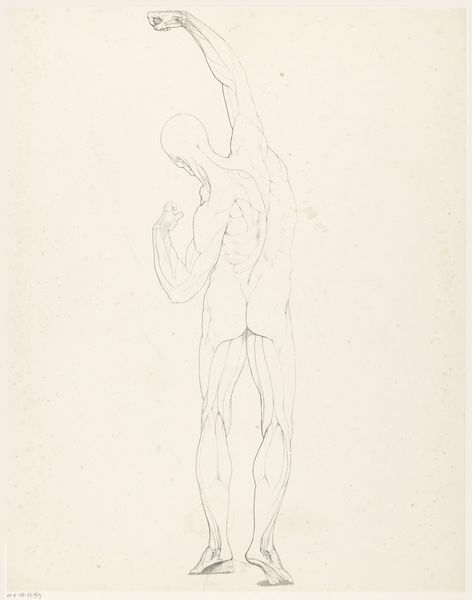
Stehender weiblicher Akt nach rechts, die rechte Hand in die Hüfte gestützt, das linke Bein angewinkelt
0:00
0:00
drawing, paper, chalk, graphite
#
portrait
#
drawing
#
figuration
#
paper
#
form
#
pencil drawing
#
chalk
#
graphite
#
nude
Copyright: Public Domain
Editor: Here we have a pencil and chalk drawing, "Stehender weiblicher Akt nach rechts, die rechte Hand in die Hüfte gestützt, das linke Bein angewinkelt" by Georg Kolbe, housed at the Städel Museum. The title translates to "Standing female nude facing right, right hand on hip, left leg bent." There's a really interesting contrast between the rough sketch-like quality and the carefully rendered form. What stands out to you about it? Curator: The artist's process is what immediately captures my attention. Graphite and chalk on paper—these materials are readily accessible, linked to both academic study and rapid mark-making. It's about economy, isn’t it? Both in the resources used, and the implied labor to produce such works quickly. Does it cheapen the act to make multiple studies, or enhance the possibility of capturing something truly human, something fleeting? Editor: That's a perspective I hadn’t considered! The sketch seems like such an intimate glimpse into the artist's process; focusing on readily available resources and labor enhances this. It suggests the body is less about idealized form, and more the study of volume and how it inhabits a real, accessible space. Curator: Precisely! This is no idealized goddess, but rather a model present in the studio, who occupies time and space and perhaps poses specific challenges for Kolbe. The lines might point to specific cultural contexts. How is the work related to similar rapid sketches by other German artists from that period? Does it participate in creating images intended for wide consumption? What's missing when considering that kind of artistic production? Editor: It seems like approaching art from this angle shifts the focus from just admiring the final product, to also examining how the materials used, and the work it implies, are key components of its message. Thank you! Curator: A great approach! And it is not to deny beauty, of course, but to perhaps consider labor's inherent value alongside it.
Comments
No comments
Be the first to comment and join the conversation on the ultimate creative platform.
